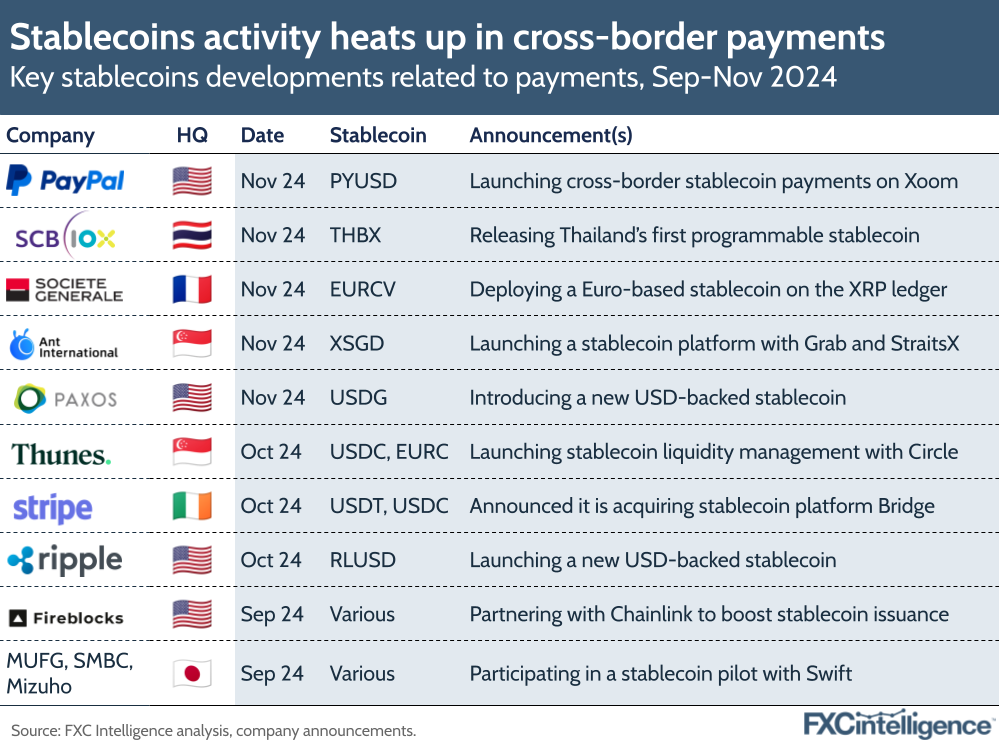Last week, PayPal announced it would be allowing disbursement partners to use its stablecoin, PayPal USD (PYUSD), to settle cross-border money transfers through Xoom – the company’s money transfer arm. This move adds to a pile of stablecoin stories recently as payment players look to carve out a slice of this burgeoning (though still largely unproven) technology.

According to PayPal, Xoom and its partners will be able to settle stablecoin transactions out of hours and help provide faster, less costly transfers to regions across APAC and Africa. These markets have been a big focus for tech driving financial inclusion and contain countries that are some of the biggest receivers of remittances worldwide.
APAC in particular has been a big focus for recent developments. Earlier this month StraitsX, which provides payments infrastructure for digital assets, launched a stablecoin-powered payments system alongside ecommerce giant Ant International and Southeast Asian superapp Grab. As a result of the partnership, travellers in Singapore can make payments in their local currency and using their local payment method to GrabPay merchants, showing the potential of stablecoins for merchant acceptance.
On this topic, Stripe has also made moves into the market, having announced it will acquire stablecoin infrastructure startup Bridge for $1.1bn. This came after the company became the first payment processor to integrate a new stablecoin payment platform launched by blockchain firm Paxos. The infrastructure will be added to Stripe’s Pay with Crypto product, allowing users to accept stablecoins and convert them into fiat currencies.
Banks have continued to take share in the stablecoin space, often through subsidiaries focused specifically on digital assets. Societe Generale, for example, has announced its intention to launch its stablecoin EURCV on the XRP ledger, having already launched it on the Ethereum and Solana blockchains, to boost the reach of EURCV globally. In September, several Japanese banks – including MUFG, SMBC and Mizuho – were reportedly joining a pilot for Project Pax, which aims to create a cross-border transfer platform to replace correspondent banking networks with stablecoins.
Much of the coverage of stablecoins in payments talks about the potential of creating revolutionary new systems, but this is still an area that is facing intense regulatory scrutiny (particularly in the US). As more big names in cross-border payments launch new products in the space, we’ll be watching to see if the investment pays off.
How can I use data to power my cross-border payments strategy?


